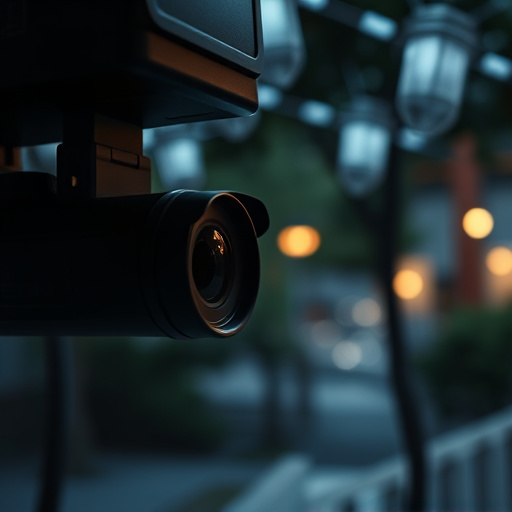Privacy risks from hidden microphones (bugs) in elderly care homes are mitigated through staff training, strategic camera placement, regular technology audits, and advanced bug detection tools like thermal imaging and RF detectors. Prioritizing high-risk areas and employing unannounced sweeps, along with professional training, creates a safe environment, deterring intruders and protecting residents' dignity and privacy from best hidden cameras for elderly care.
In today’s digital age, privacy concerns have never been more pressing. One of the subtle yet powerful threats is the presence of hidden cameras and microphones in homes, particularly targeting vulnerable populations like the elderly. This article serves as a comprehensive guide to microphone bug sweeping detection techniques, offering insights into understanding and mitigating these covert surveillance risks. We’ll explore best practices for identifying hidden cameras and delve into advanced methods to uncover microscopic listening devices, empowering you with the knowledge to ensure safety.
- Understanding Microphone Bug Sweeping: A Comprehensive Guide
- Best Practices for Detecting Hidden Cameras in Homes
- Advanced Techniques to Uncover Microscopic Listening Devices
Understanding Microphone Bug Sweeping: A Comprehensive Guide
Microphone bug sweeping, also known as audio surveillance or wiretapping, involves secretly recording conversations through hidden microphones. This clandestine activity can pose significant privacy risks, especially in sensitive environments like elderly care homes. Understanding how to detect such bugs is crucial for maintaining a safe and secure space.
A comprehensive guide to microphone bug sweeping detection begins with awareness. Staff members should be trained to recognize potential signs, such as unusual sounds or subtle audio distortions during calls. The best hidden cameras for elderly care, strategically placed, can aid in visual verification. Additionally, regular technology audits and security checks are essential. These measures, combined with advanced listening devices designed for bug detection, create a robust defense against covert audio surveillance, ensuring peace of mind for both residents and caregivers.
Best Practices for Detecting Hidden Cameras in Homes
When it comes to ensuring privacy and security, detecting hidden cameras in homes is a critical task, especially if you’re considering the well-being of elderly loved ones. The best practices involve a multi-layered approach, starting with regular visual inspections of potential hiding spots. Look for any unusual devices or modifications to walls, ceilings, and furniture, as these could indicate the presence of hidden cameras. Using specialized equipment like UV lights, which can reveal covert recording devices that are invisible to the naked eye, is another effective method.
Additionally, employing advanced bug sweeping techniques with certified professionals who have expertise in detecting audio and visual surveillance equipment is highly recommended. These experts utilize state-of-the-art gear, such as radio frequency (RF) detectors and thermal imaging cameras, to uncover hidden cameras. For elderly care settings, focusing on high-risk areas like bedrooms, bathrooms, and living rooms can significantly reduce the risk of privacy invasion. Remember, staying proactive and adopting best practices will help create a safer environment for the elderly, especially when considering the potential use of best hidden cameras for elderly care.
Advanced Techniques to Uncover Microscopic Listening Devices
In the quest to ensure privacy and security, especially in sensitive environments like elderly care homes, advanced techniques are required to uncover even the most microscopic listening devices. Beyond visual inspections, professionals now employ sophisticated equipment such as thermal imaging cameras and radio frequency (RF) detectors. These tools can identify hidden cameras, often disguised as everyday objects, by detecting heat signatures or electromagnetic emissions respectively. For instance, best hidden cameras for elderly care often mimic common items like smoke detectors or light switches, making them nearly invisible to the naked eye.
By combining these advanced techniques with rigorous physical searches, care home administrators can create a comprehensive security strategy. Regular, unannounced sweeps become crucial in deterring potential intruders from installing such devices. Moreover, training staff to recognize unusual behavior or objects can further bolster security measures. This multi-pronged approach ensures that the privacy and dignity of residents are maintained, fostering an environment where they can live safely and securely.
Microphone bug sweeping detection is a critical skill in today’s digital age, where privacy breaches can range from uncomfortable to harmful. By understanding various detection techniques and best practices, such as those outlined for hidden cameras in homes, individuals can ensure their personal spaces remain secure. Advanced tools and methods, including microscopic listening device discovery, empower homeowners to safeguard their privacy. While the topic may seem niche, it’s a vital step towards protecting oneself and one’s loved ones—especially considering the growing need for elderly care solutions that prioritize safety and respect for personal boundaries, like examining the best hidden cameras for elderly care applications.
